The Illustrated Guide To Loudspeaker Health Care and General Sound System Well-Being
or... The Adventures of Captain Rock and his Sidekick "Roadie"
In the late 1970's, when live sound was still a technology that was the domain of sound wizards, and the bands that rented sound systems were often unfamiliar with the necessary steps for protecting the equipment in their charge, I drew up this set of cartoons for the ultimate benefit of the rental equipment. As things tend to happen, this cartoon set found its way through the secret audio underground of suppliers and dealers. It found its way to Cetec Audio (then manufacturing Gauss Loudspeakers) who first requested the right to print it. This was a very popular handout at AES conventions and was seen in the market for several years. Several years later, Altec Lansing had received a photo-copy of a photo-copy of a photo-copy of the original hand sketches. Not knowing who the author was, they had it re-drawn by a staff artist and published it as a Tech-Note. The author-ship was identified for the second printing. The technology looks as dated as you'd expect from the twenty plus years that has passed since it was drawn, but for the appreciation of the old timers in the pro-sound biz, it is available again (a digital re-release, now that's a 90's kind of thing) on the web. All twenty of the original images and descriptions are available here, just by clicking on the images below.
|
1.Never hook up a speaker when the amplifier is on and being driven by a signal. | 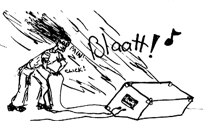 |
| 2. Never turn on low level electronics such as the mixer, graph, etc. after the power amplifiers are on. | 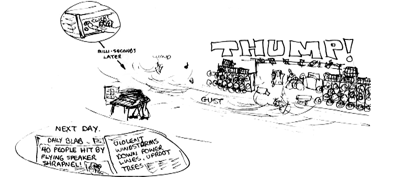 |
| 3. Always use a DC blocking capacitor on high frequencycompression drivers when bi-amping to protect them from turn-on transients and spurious low frequency signals. | 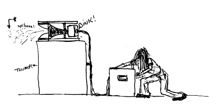 |
| 4. Avoid excessive low frequency signals as severe cone damage becomes more probable. Use high pass filters at 40-50Hz at 18dB/octave. | 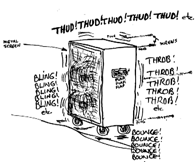 |
| 5. Avoid feedback like the plague, high frequency compression drivers can very quickly be overpowered by sustained feedback. | 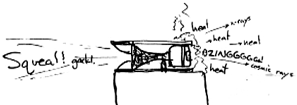 |
| 6. Keep dust, dirt, cola, beer, popcorn, dead mice, etc. out of the throat of high frequency horn. They present an increased load on the driver and significantly reduce high frequency output. | 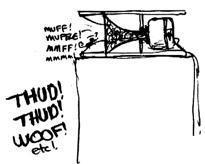 |
| 7. It is recommended that you use either metal or plastic window screen to protect the speakers from flying objects such as those encountered in taverns and cabarets. | 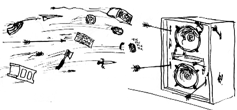 |
| 8. Do not run amplifiers into clipping as this will reduce both amplifier and speaker life expectancy. | 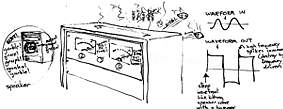 |
| 9. A solid support for the speaker system is a necessity. | 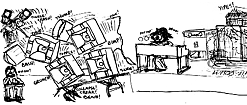 |
| 10. Use some logical approach to stacking a speaker system to provide a stable structure even at the expense of coverage. |  |
| 11. Avoid ground loops, ground loops and high power amplifiers may be fatal to loudspeakers. Do not make connections to equipment with the levels up or the power amps on. Use connectors that make ground connections first such as XLR type. Keep cables in good repair. | 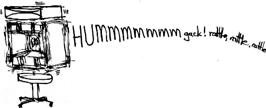 |
| 12. Store speakers in areas that maintain a fairly even temperature and humidity and not extremes of either. | 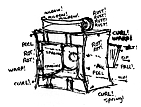 |
| 13. When using multicell horns and fibreglass horns they should be put into travel cases. | 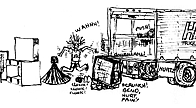 |
| 14. When using speaker systems outdoors keep weather protection handy. Even a small amount of rain or water can damage the bass speaker cone and cause rusting of the internal surface of the drivers. | 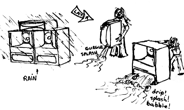 |
| 15. Avoid excessive equalization, avoid frequency extremes when equalizing as it presents demands that most speakers can't handle, especially in live sound reinforcement. | 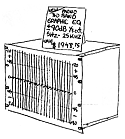 |
| 16. Casters are nice but, when moving heavy speaker cabinets and amp racks, secure them to avoid runaways. | 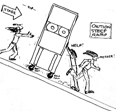 |
| 17. A stout grille should be used on floor monitors. | 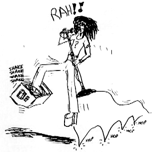 |
| 18. Make a habit of regularly checking the mounting bolts or clamps on speakers for tightness. | 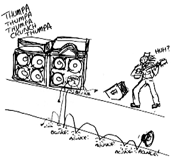 |
| 19. Always use an amplifier with protection against DC voltage on the output terminals. Dead output devices can plop the full DC power supply voltage through your woofer (or tweeter) voice coil. This is typically over 70 volts DC for a 200 watt per channel amplifier, the power | supply can deliver a lot of current, and it can do it fast. A fastblo fuse takes half a second to quit, yet a speaker is designed to respond to transients. That means you can be wearing your voice coil before a fuse blows. | 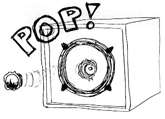 |
| 20. When using scaffold to support a speaker stack, make sure you use very reliable planking. | 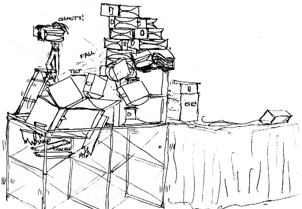 |
|




















